A macro lens is perfect for shooting up close. But most lenses don’t let you focus close enough to achieve a life-sized 1:1 magnification, also known as “true macro.” But how can you achieve true macro without buying a dedicated macro lens?
Extension tubes can effectively turn the lens you already have into a macro lens. They extend the magnification of your lens, allowing for macro and close-up photography. Continue reading to learn what extension tubes are and how you can use them as a cheap and easy way to start shooting macro photography!
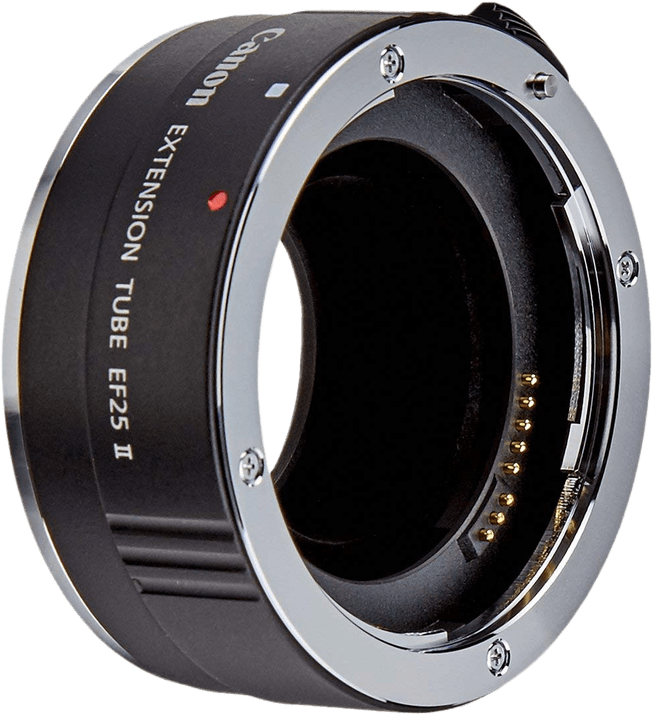
Lens extension tubes extend the magnification of your lenses. They’re a cheap and effective starting point for building a macro photography kit.
The further away from the sensor your lens is, the closer it can focus. For macro photography, close focusing is exactly what you need.
Extension tubes fit between the camera body and the lens. They twist onto your camera as a normal lens would, and then the lens attaches to the front of the tube.
Technically, they increase focal length while holding the aperture diameter and the minimum focus distance constant. Simply put, they allow your lens to focus closer because the focusing element is further away from the sensor.
The magnification increases until it reaches its limit at the minimum focusing distance.
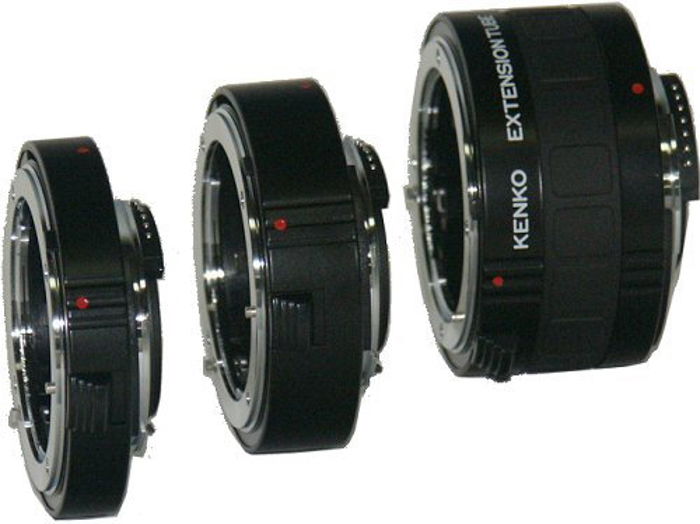
Magnification is the ratio of an object’s real size to the size it is when it hits the sensor. A lens’ maximum magnification is reached at its closest focusing distance.
Most non-macro lenses have a maximum magnification ratio between 1:8 (0.12x) and 1:3 (0.33x). That’s enough for close portraits or product photography but not enough for macro shots.
You can decrease the focusing distance and thus increase the ratio by adding extension tubes.
Here’s a quick way to calculate the magnification ratio when you add an extension tube:
extended magnification =
original magnification [in 0.x form] + (length of extension tubes / focal length of lens).
Let’s take a look at our favorite lens for macro photography, the Canon 100mm f/2.8 L IS. This lens is capable of 1:1 magnification by default, but we often increase that magnification with extension tubes. The 100mm focal length makes calculating magnification for this lens.
Below, you see a 25mm and a 12mm extension tube stacked and placed between the camera and the lens. Add them up, and you have 37mm of extension in total.
Let’s substitute the values we know into the formula:
M = 1.00 + (37mm / 100mm) = 1.37
So, our new magnification in this case is 1.37x (or 1.37:1, if you like that form better).
If we were to add those same extension tubes onto a 180mm macro lens, the magnification would be different.
M = 1.00 + (37mm / 180mm) = 1.21x
As you can see, the ratio is now only 1.21x.
The takeaway is this: the shorter your lens, the more difference extension tubes make.

You can buy two types of extension tubes. Cheaper ones don’t have electric contacts to connect to your camera body, but there are more advanced ones that do.
These are very cheap. They limit the control you get from your lens, but they are enough for certain situations.
They lack electrical contact with the camera. In general, this means that:
With focus-by-wire lenses (like Canon STM lenses), you can’t even manually focus. You’ll need to get different extension tubes if you have these lenses.
There are modern lenses that allow you to set the aperture manually with a ring. These include the Sigma 35mm f/1.2 Art, for instance. For such lenses, non-electrical extension tubes are no problem.
For extension tubes without electrical contacts, we recommend the Acouto Macro 3-piece Extension Tube Set.
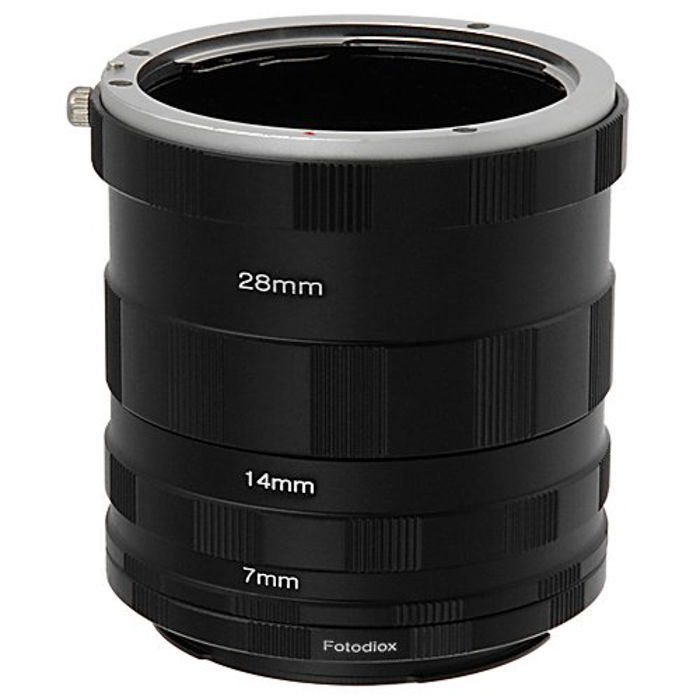
These tubes transfer electronic signals between the lens and the camera body. You can choose between brand-name and third-party offerings. They are basically the same thing, but brand-name versions will be more expensive.
There is nothing very special about these extenders. There are no moving parts or glass. Third-party manufacturers can make products that are just as good as the OEM versions.
For OEM extension tubes, we recommend the EF 25 II and EF 12 II for Canon and the PK-13 A and PK 11 A for Nikon. For third-party products, you can’t go wrong with Kenko extension tubes for Canon and Nikon.
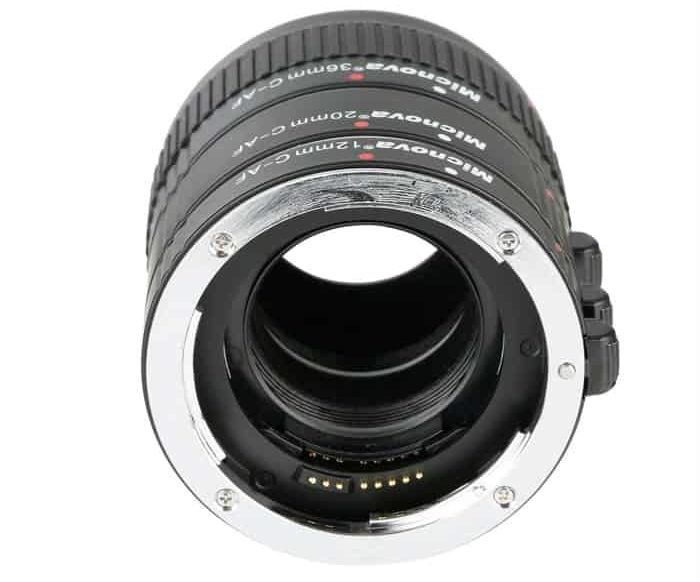
Extension tubes are much cheaper than macro lenses. Their whole point is to magnify lenses you already own to produce life-size macro images.
They are also smaller in size than a macro lens. You won’t have to carry around an extra lens just to take a few macro shots.
You can use them with the lenses you already own but can’t use to focus close enough to shoot macro. Combining a tilt-shift lens with extension tubes can produce extremely unique images.
Extension tubes are less effective with telephoto lenses than with shorter lenses.
But there’s a bigger problem. By using lens extension tubes, you trade magnification for light. When you add extension tubes, less light will reach the sensor. This is due to increased focal length and, thus, decreased relative aperture.
You might be able to compensate for this by using a wider aperture or a ring flash. It is also possible to use a slower shutter speed or higher ISO, but these will affect your overall exposure.

The best way to use these lens extension tubes is with manual focus. Turn on Live View and enable 10x digital magnification for the most accurate focusing.
The depth of field will be very shallow at this close focusing range. You can increase your ISO and choose a narrow aperture. These settings give your image a deeper depth of field but also more digital noise.
If you set up a tripod, you have more control over your exposure settings while photographing static objects. You can use a lower ISO and a slower shutter speed.
You can also set your aperture and shoot multiple photos while changing focus for each photo. Later, you can combine those shots into a single, sharp composite image. This technique is called focus stacking.
For handheld macro photography, you will need a fast shutter speed to minimize camera shake. You’ll notice that motion blur is much more common when shooting close-ups.
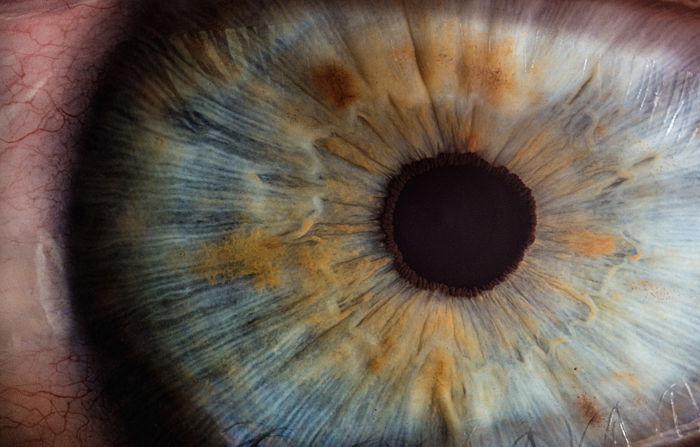
Extension tubes are a cheap and easy way to start shooting macro photography. They’re perfect for turning the lens you already own into a macro lens.
Using an extension tube takes a little getting used to. But with a little practice, they open up a world of macro shooting possibilities.

